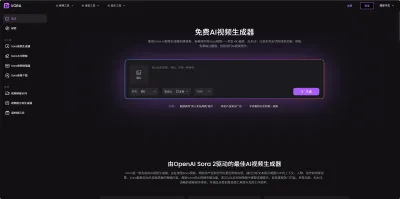This list can be considered outdated. For a more up-to-date list, check: https://github.com/lixus7/Time-Series-Works-Conferences
Traffic Prediction
Traffic prediction is the task of predicting future traffic measurements (e.g. volume, speed, etc.) in a road network (graph), using historical data (timeseries).
Things are usually better defined through exclusions, so here are similar things that I do not include:
-
NYC taxi and bike (and other similar datsets, like uber), are not included, because they tend to be represented as a grid, not a graph.
-
Predicting human mobility, either indoors, or through checking-in in Point of Interest (POI), or through a transport network.
-
Predicting trajectory.
-
Predicting the movement of individual cars through sensors for the purpose of self-driving car.
-
Traffic data imputations.
-
Traffic anomaly detections.
The papers are haphazardly selected.
Summary
A tabular summary of paper and publically available datasets. The paper is reverse chronologically sorted. NO GUARANTEE is made that this table is complete or accurate (please raise an issue if you spot any error).
| paper | venue | published date | # other datsets | METR-LA | PeMS-BAY | PeMS-D7(M) | PeMS-D7(L) | PeMS-04 | PeMS-08 | LOOP | SZ-taxi | Los-loop | PeMS-03 | PeMS-07 | PeMS-I-405 | PeMS-04(S) | TOTAL open |
|---|---|---|---|---|---|---|---|---|---|---|---|---|---|---|---|---|---|
| TOTAL | 38 | 28 | 6 | 3 | 3 | 3 | 3 | 2 | 2 | 1 | 1 | 1 | 1 | 95 | |||
| G-SWaN | IoTDI | 9 May 23 | 1 | 1 | 1 | 1 | 4 | ||||||||||
| SCPT | ArXiv | 9 May 23 | 1 | 1 | 1 | 1 | 4 | ||||||||||
| MP-WaveNet | ArXiv | 9 May 23 | 1 | 1 | 2 | ||||||||||||
| GTS | ICLR | 4 May 21 | 1 | 1 | 1 | 2 | |||||||||||
| FASTGNN | TII | 29 Jan 21 | 1 | 1 | |||||||||||||
| HetGAT | JAIHC | 23 Jan 21 | 1 | 1 | 2 | ||||||||||||
| GST-GAT | IEEE Access | 6 Jan 21 | 1 | 1 | 2 | ||||||||||||
| CLGRN | arXiv | 4 Jan 21 | 3 | 1 | 1 | ||||||||||||
| DKFN | SIGSPATIAL | 3 Nov 20 | 1 | 1 | 2 | ||||||||||||
| STGAM | CISP-BMEI | 17 Oct 20 | 1 | 1 | 2 | ||||||||||||
| ARNN | Nat. Commun | 11 Sept 20 | 1 | 1 | |||||||||||||
| ST-TrafficNet | ELECGJ | 9 Sept 20 | 1 | 1 | 2 | ||||||||||||
| M2 | J. AdHoc | 1 Sept 20 | 1 | 1 | 2 | ||||||||||||
| H-STGCN | KDD | 23 Aug 20 | 0 | ||||||||||||||
| SGMN | J. TRC | 20 Aug 20 | 1 | 1 | 2 | ||||||||||||
| GDRNN | NTU | 16 Aug 20 | 1 | 1 | 2 | ||||||||||||
| ISTD-GCN | arXiv | 10 Aug 20 | 1 | 1 | 2 | ||||||||||||
| GTS | UCONN | 3 Aug 20 | 1 | 1 | 2 | ||||||||||||
| FC-GAGA | arXiv | 30 Jul 20 | 1 | 1 | 2 | ||||||||||||
| STGAT | IEEE Access | 22 Jul 20 | 1 | 1 | 2 | ||||||||||||
| STNN | T-ITS | 16 Jul 20 | 0 | ||||||||||||||
| AGCRN | arXiv | 6 Jul 20 | 1 | 1 | 2 | ||||||||||||
| GWNN-LSTM | J. Phys. Conf. Ser. | 20 Jun 20 | 1 | 1 | |||||||||||||
| A3T-GCN | arXiv | 20 Jun 20 | 1 | 1 | 2 | ||||||||||||
| TSE-SC | Trans-GIS | 1 Jun 20 | 1 | 1 | 2 | ||||||||||||
| MTGNN | arXiv | 24 May 20 | 1 | 1 | 2 | ||||||||||||
| ST-MetaNet+ | TKDE | 19 May 20 | 1 | 1 | 2 | ||||||||||||
| STGNN | WWW | 20 Apr 20 | 1 | 1 | 2 | ||||||||||||
| STSeq2Seq | arXiv | 6 Apr 20 | 1 | 1 | 2 | ||||||||||||
| DSTGNN | arXiv | 12 Mar 20 | 1 | 1 | |||||||||||||
| RSTAG | IoT-J | 19 Feb 20 | 1 | 1 | 2 | ||||||||||||
| GMAN | AAAI | 7 Feb 20 | 1 | 1 | |||||||||||||
| MRA-BGCN | AAAI | 7 Feb 20 | 1 | 1 | 2 | ||||||||||||
| STSGCN | AAAI | 7 Feb 20 | 1 | 1 | 1 | 1 | 4 | ||||||||||
| SLCNN | AAAI | 7 Feb 20 | 1 | 1 | 1 | 3 | |||||||||||
| DDP-GCN | arXiv | 7 Feb 20 | 0 | ||||||||||||||
| R-SSM | ICLR | 13 Jan 20 | 1 | 1 | |||||||||||||
| GWNV2 | arXiv | 11 Dec 19 | 1 | 1 | 2 | ||||||||||||
| DeepGLO | NeurIPS | 8 Dec 19 | 1 | 1 | 1 | ||||||||||||
| STGRAT | arXiv | 29 Nov 19 | 1 | 1 | 2 | ||||||||||||
| TGC-LSTM | T-ITS | 28 Nov 19 | 1 | 1 | |||||||||||||
| DCRNN-RIL | TrustCom/BigDataSE | 31 Oct 19 | 1 | 1 | 2 | ||||||||||||
| L-VGAE | arXiv | 18 Oct 19 | 1 | 1 | |||||||||||||
| T-GCN | T-ITS | 22 Aug 19 | 1 | 1 | 2 | ||||||||||||
| GWN | IJCAI | 10 Aug 19 | 1 | 1 | 2 | ||||||||||||
| ST-MetaNet | KDD | 25 Jul 19 | 1 | 1 | |||||||||||||
| MRes-RGNN-G | AAAI | 17 Jul 19 | 1 | 1 | 2 | ||||||||||||
| CDSA | arXiv | 23 May 19 | 1 | 1 | |||||||||||||
| STDGI | ICLR | 12 Apr 19 | 1 | 1 | |||||||||||||
| ST-UNet | arXiv | 13 Mar 19 | 1 | 1 | 1 | 3 | |||||||||||
| 3D-TGCN | arXiv | 3 Mar 19 | 1 | 1 | 1 | 3 | |||||||||||
| ASTGCN | AAAI | 27 Jan 19 | 1 | 1 | 2 | ||||||||||||
| PSN | T-ITS | 17 Aug 18 | 1 | 0 | |||||||||||||
| GaAN | UAI | 6 Aug 18 | 2 | 1 | 1 | ||||||||||||
| Seq2Seq Hybrid | KDD | 19 Jul 18 | 0 | ||||||||||||||
| STGCN | IJCAI | 13 Jul 18 | 1 | 1 | 2 | ||||||||||||
| DCRNN | ICLR | 30 Apr 18 | 1 | 1 | 2 | ||||||||||||
| SBU-LSTM | UrbComp | 14 Aug 17 | 1 | 1 | |||||||||||||
| GRU | YAC | 5 Jan 17 | 1 | 1 |
Performance
NOTES: The experimental setttings may vary. But the common setting is:
-
Observation window = 12 timesteps
-
Prediction horizon = 1 timesteps
-
Prediction window = 12 timesteps
-
Metrics = MAE, RMSE, MAPE
-
Train, validation, and test splits = 7/1/2 OR 6/2/2
However, there are many caveats:
-
Some use different models for different prediction horizon.
-
Some use different batch size when testing previous models, as they increase the observation and prediction windows from previous studies, and have difficulties fitting it on GPU using the same batch size.
-
Regarding adjacency matrix, some derive it using Gaussian RBF from the coordinates, some use the actual connectivity, some simply learn it, and some use combinations.
-
Some might also add more context, such as time of day, or day of the week, or weather.
-
DeepGLO in particular, since it is treating it as a multi-channel timeseries without the spatial information, use rolling validation,
-
Many different treatment of missing datasets, from exclusion to imputations.
Dataset
Publically available datasets and where to find them.
-
METR-LA DCRNN Google Drive; DCRNN Baidu; Sensor coordinates and adjacency matrix, also from DCRNN
-
California department of transportation (Caltrans) Performance Measurement System (PeMS). The website is: http://pems.dot.ca.gov/. From the website: The traffic data displayed on the map is collected in real-time from over 39,000 individual detectors. These sensors span the freeway system across all major metropolitan areas of the State of California
- PeMS-BAY DCRNN Google Drive; DCRNN Baidu
Sensor coordinates and adjacency matrix, DCRNN github
-
PeMS-D7(M) PKUAI26 STGCN Github
-
PeMS-D7(L)
-
PeMS-04 [ATSGCN
编辑推荐精选


Vora
免费创建高清无水印Sora视频
Vora是一个免费创建高清无水印Sora视频的AI工具


Refly.AI
最适合小白的AI自动化工作流平台
无需编码,轻松生成可复用、可变现的AI自动化工作流


酷表ChatExcel
大模型驱动的Excel数据处理工具
基于大模型交互的表格处理系统,允许用户通过对话方式完成数据整理和可视化分析。系统采用机器学习算法解析用户指令,自动执行排序、公式计算和数据透视等操作,支持多种文件格式导入导出。数据处理响应速度保持在0.8秒以内,支持超过100万行数据的即时分析。


TRAE编程
AI辅助编程,代码自动修复
Trae是一种自适应的集成开发环境(IDE),通过自动化和多元协作改变开发流程。利用Trae,团队能够更快速、精确地编写和部署代码,从而提高编程效率和项目交付速度。Trae具备上下文感知和代码自动完成功能,是提升开发效率的理想工具。


AIWritePaper论文写作
AI论文写作指导平台
AIWritePaper论文写作是一站式AI论文写作辅助工具,简化了选题、文献检索至论文撰写的整个过程。通过简单设定,平台可快速生成高质量论文大纲和全文,配合图表、参考文献等一应俱全,同时提供开题报告和答辩PPT等增值服务,保障数据安全,有效提升写作效率和论文质量。


博思AIPPT
AI一键生成PPT,就用博思AIPPT!
博思AIPPT,新一代的AI生成PPT平台,支持智能生成PPT、AI美化PPT、文本&链接生成PPT、导入Word/PDF/Markdown文档生成PPT等,内置海量精美PPT模板,涵盖商务、教育、科技等不同风格,同时针对每个页面提供多种版式,一键自适应切换,完美适配各种办公场景。


潮际好麦
AI赋能电商视觉革命,一站式智能商拍平台
潮际好麦深耕服装行业,是国内AI试衣效果最好的软件。使用先进AIGC能力为电商卖家批量提供优质的、低成本的商拍图。合作品牌有Shein、Lazada、安踏、百丽等65个国内外头部品牌,以及国内10万+淘宝、天猫、京东等主流平台的品牌商家,为卖家节省将近85%的出图成本,提升约3倍出图效率,让品牌能够快速上架。


iTerms
企业专属的AI法律顾问
iTerms是法大大集团旗下法律子品牌,基于最先进的大语言模型(LLM)、专业的法律知识库和强大的智能体架构,帮助企业扫清合规障碍,筑牢风控防线,成为您企业专属的AI法律顾问。


SimilarWeb流量提升
稳定高效的流量提升解决方案,助力品牌曝光
稳定高效的流量提升解决方案,助力品牌曝光


Sora2视频免费生成
最新版Sora2模型免费使用,一键生成无水印视频
最新版Sora2模型免费使用,一键生成无水印视频
推荐工具精选
AI云服务特惠
懂AI专属折扣关注微信公众号
最新AI工具、AI资讯
独家AI资源、AI项目落地

微信扫一扫关注公众号






